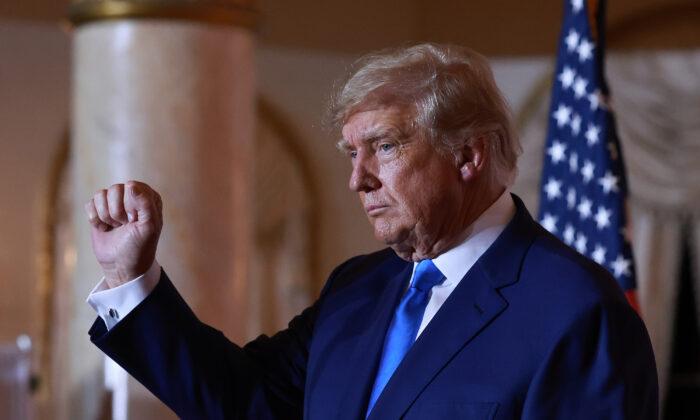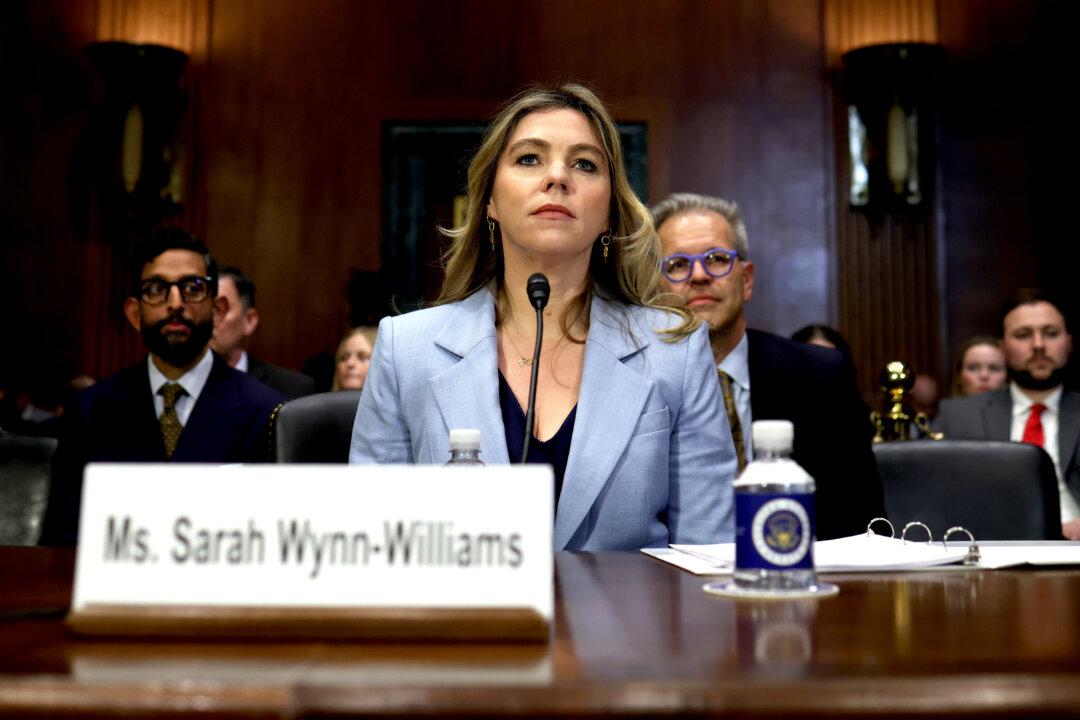Former President Donald Trump stepped up his presidential campaign efforts on Jan. 26 by proposing several key changes to public education, asserting that “radical left maniacs” had overtaken the system.
“First, we will cut federal funding for any school or program pushing critical race theory, gender ideology, or other inappropriate racial, sexual, or political content onto our children,” Trump vowed.
“We’re not going to allow it to happen,” he added, noting that he would instruct the Departments of Justice and Education to open civil rights investigations into school districts that had engaged in racial discrimination.
“The Marxism being preached in our schools is also totally hostile to Judeo-Christian teachings,” Trump said, “and in many ways, it’s resembling an established new religion. Can’t allow that to happen. For this reason, my administration will aggressively pursue potential violations of the Establishment Clause and the Free Exercise Clause of the Constitution.”
Also holding that the Education Department had been “infiltrated” by “radical zealots and Marxists,” the former president promised to begin rooting out such subversives on his first day in office.
“Joe Biden has given these lunatics unchecked power,” Trump said. “I will have them fired and escorted from the building, and I will tell Congress that any appropriations bill I sign must reaffirm the president’s ability to remove defiant employees from the job.
Other actions Trump vowed to take included vetoing efforts to weaponize civics education, upholding traditional gender divisions in sports, and creating a new credentialing body to certify teachers who “embrace patriotic values, support our way of life, and understand that their job is not to indoctrinate children but, very simply, to educate them.”
As for funding, “favorable treatment,” he said, would be given to states and school districts based on their enactment of certain reforms, including the abolition of teacher tenure for grades K through 12 and the adoption of merit-based pay; cuts to administrative positions, including the “diversity, equity, and inclusion bureaucracy”; the adoption of a Parental Bill of Rights with total curriculum transparency and universal school choice; and implementation of the direct election of school principals by parents.
From Playground to Battleground
Public schools have become a fierce battleground in American politics in recent years, with the national switch over to virtual learning during the COVID-19 pandemic providing parents with a window into their children’s education.
While the theory’s proponents hold that it is merely a critical lens through which students can better understand the racial injustices of the past, those who oppose the ideology fear it only serves to deepen racial divides and breed hatred and resentment.
“A college faculty and student body must be free to cultivate a spirit of inquiry and scholarly criticism, and to examine ideas in an atmosphere of freedom and confidence, free from shielding and in a nondiscriminatory manner,” the FCS presidents said in a statement.
“The FCS presidents remain committed to developing campus environments that uphold objectivity in teaching and learning and in professional development and that welcome all voices—environments in which students, faculty, and staff can pursue their academic interests without fear of reprisal or being ‘canceled,’” they added.
However, such moves have angered those who support critical race theory, like Shayla Reese Griffin, co-founder and facilitator of the social justice organization Justice Leaders Collaborative.
“This is about power,” Griffin argued last year. “The goal of this [anti-critical race theory] movement is to maintain political power,” Griffin said. “Schools are a site of that conflict because those folks know that, how students graduate from school, and what they think about justice, is going to matter in how they vote and matter in the long-term impact to our country.”
“America’s comeback starts right now,” he said.





